You searched for: nazi germany
<< Previous | Displaying results 1126-1150 of 1274 for "nazi germany" | Next >>
-
Children's art: Drawing of people in a garden
ArtifactAlice Goldberger (1897-1986) was born in Berlin, Germany. Trained as a youth-work instructor, she ran a shelter for disadvantaged children and their families. When Hitler came to power, Alice, who was Jewish, had to give up her post. She immigrated to England in 1939. When war broke out, Alice was interned on the Isle of Man as an enemy alien. While there, she organized a children's facility.Hearing of Alice's work in the camp, psychoanalyst Anna Freud (daughter of Sigmund Freud) intervened to secure her…

-
Naftali Bernstein
ID CardNaftali was one of six children born to a Jewish family in the small Lithuanian village of Karchai. When he was a young boy, a tutor would come to Karchai to teach the Jewish children in the village. Naftali later began public school in Janova and after graduating he went to an agricultural school. In 1929 Naftali moved to Siauliai, where he worked grading beets in a sugar beet factory. 1933-39: In Siauliai, Naftali lived with his sister, Sara, and her family who ran a dairy store. Naftali was a religious…
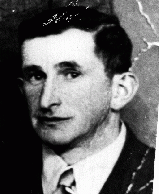
-
Laszlo Schwed
ID CardLaszlo was raised by Hungarian-speaking Jewish parents in the town of Kiskunfelegyhaza in southeastern Hungary. He opened a business selling goose meat, feathers, down and quilts. In 1931 he married Anna Mahrer, from Budapest, and they had a daughter in January 1932. 1933-39: Laszlo and Anna had a second child, a son. They raised their two children in a comfortable home. Kiskunfelegyhaza was located in a rural part of Hungary. In May 1939, the Hungarian government enacted a law that defined Jews as alien…
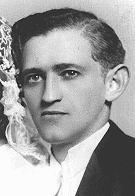
-
Safe conduct pass issued to a prisoner in Djelfa
DocumentSafe conduct pass issued to Hans Landesberg in the Djelfa internment camp, releasing him to leave for Algiers. Djelfa, Algeria, January 26, 1943. Hans was born in Vienna, Austria, and went to medical school. After graduating, he left for Paris and joined a battalion of the International Brigade to fight in the Spanish Civil War. He returned to France in February 1939, only to be interned first in Argeles and then in Gurs. Some time after the French surrender to Nazi Germany in June 1940, Hans and other…
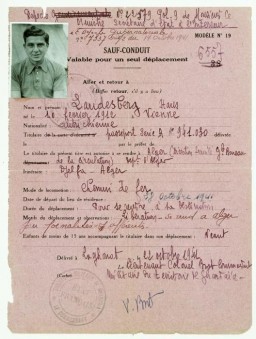
-
Yugoslav partisans prepare to fight
FilmAt his hidden headquarters in the mountains of Yugoslavia, Marshal Tito (Josip Broz), head of the Yugoslav Communist partisan movement, prepares his forces for battle. Women gather silk parachutes, used to drop supplies by Allied forces, for use as bandages. Partisans train, preparing to fight the Germans. At the height of the partisan war in Yugoslavia in 1943, Tito's partisans engaged some 35 Axis divisions, which otherwise might have been in service on the Italian or eastern fronts.

-
Telford Taylor describes Justice Case defendants
FilmIn the Justice Case of the Subsequent Nuremberg Proceedings, nine officials from the German Ministry of Justice and seven members of the Nazi-era People's and Special Courts were charged with “judicial murder and other atrocities, which they committed by destroying law and justice in Germany, and then utilizing the emptied forms of legal process for the persecution, enslavement and extermination on a large scale.” This footage shows US prosecutor Telford Taylor describing the defendants.
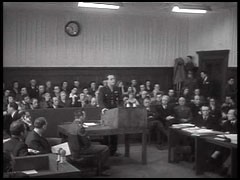
-
Sam Spiegel describes hiding in woods before liberation
Oral HistoryIn 1942, Sam was forced into a ghetto in his hometown and assigned to work in a munitions factory. In 1944 he was transported to Auschwitz and then forced to work in a train factory. He survived eight days on a death march after the evacuation of Auschwitz by the Nazis. He was liberated by Soviet units in January 1945. He lived in a displaced persons camp in Germany where worked for the United Nations Relief and Rehabilitation Administration. In 1947, he immigrated to the United States.

-
Drexel Sprecher describes a witness at the Nuremberg trials
Oral HistoryDrexel Sprecher was educated at the University of Wisconsin, the London School of Economics, and at the Harvard School of Law before receiving a position at the US Government's Labor Board in 1938. He enlisted in the American military after the United States declared war on Germany, and was posted to London. After the war, Sprecher served as a prosecutor of Nazi war criminals at the Nuremberg trials.
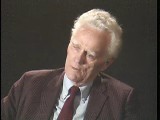
-
Drexel Sprecher describes layout of the courtroom at Nuremberg
Oral HistoryDrexel Sprecher was educated at the University of Wisconsin, the London School of Economics, and at the Harvard School of Law before receiving a position at the US Government's Labor Board in 1938. He enlisted in the American military after the United States declared war on Germany, and was posted to London. After the war, Sprecher served as a prosecutor of Nazi war criminals at the Nuremberg trials.

-
Vilna
ArticleDuring the Holocaust, the creation of ghettos was a key step in the Nazi process of ultimately destroying Europe's Jews. Learn about the Vilna ghetto.

-
Aliyah Bet
ArticleLearn more about Aliyah Bet, the clandestine immigration of Jews to Palestine between 1920 and 1948, when Great Britain controlled the area.

-
Althammer
ArticleThe Germans established the Althammer camp in September 1944. It was a subcamp of Auschwitz. Read more about the camp's history and conditions there.
-
Janusz Korczak
ArticleJanusz Korczak ran a Jewish orphanage in Warsaw. He and his staff stayed with the children even as German authorities deported them to their deaths at Treblinka in 1942.
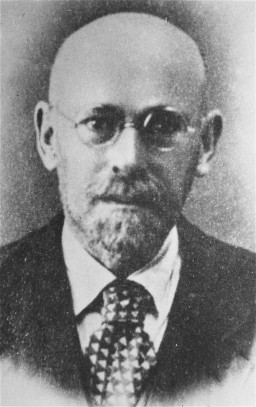
-
Displaced Persons Camps in the Steiermark District
ArticleAfter WWII, many Holocaust survivors, unable to return to their homes, lived in displaced persons camps in Germany, Austria, and Italy. Read about Steiermark District DP camps.
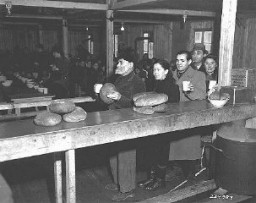
-
King Christian X of Denmark
ArticleDid King Christian X of Denmark wear a yellow star in support of the Danish Jews? Read more about the historical truth behind the legend.
-
United States Immigration and Refugee Law, 1921–1980
ArticleUS immigration and refugee laws and policies evolved in response to World War I, the 1918 influenza pandemic, and World War II and the Holocaust. Learn more.
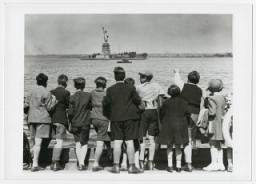
-
Axis Invasion of Yugoslavia
ArticleThe Axis powers invaded Yugoslavia on April 6, 1941. Learn about the Axis invasion and partition, collaboration, and the fate of Jewish people living in Yugoslavia.

-
The Farhud
ArticleThe Farhud (pogrom), an outbreak of mob violence against Baghdad Jewry in June 1941, was a turning point in the history of Jews in Iraq. Learn more
-
Laura Ellenbogen
ID CardLaura was one of five children born to a Jewish family in the southeastern Polish town of Rozwadow. Jews comprised almost two-thirds of the town's population. Laura's father worked as a wholesaler, providing families in the area with grain, potatoes and other produce. Laura attended one of the town's public schools. 1933-39: Germany and the Soviet Union partitioned Poland [as a result of the Nazi-Soviet Pact] in September 1939. Laura's town lay on the demarcation line. On September 24 the Germans reached…
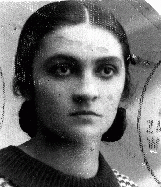
-
Raszka (Roza) Galek
ID CardRoza was born to a Jewish family in a predominately Catholic village near Warsaw. Her father owned a prosperous pearl button factory that employed some 100 people. They shared a large home with Roza's grandmother who ran a general store and bakery in the village. Roza and her three sisters attended Polish schools and took Hebrew lessons at the towns' synagogue. 1933-39: Roza's father frequently did business in Warsaw so the family moved there in 1934. They loved the city, and often went to concerts and…
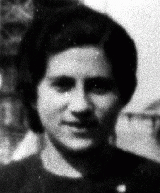
-
Reidar Dittmann
ID CardReidar was the third of four sons born to religious Lutheran parents in a small seafaring and whaling town along the Norwegian coast. Reidar's father was a civil servant. Reidar attended public school and dreamed of becoming a musician. 1933-39: Although Reidar was not interested in politics, he sympathized with his Jewish neighbors who had come as refugees from Germany. In fall 1939 he was saddened when Germany attacked Poland and the USSR attacked Finland. Several days later, his oldest brother passed…

-
Renate Guttmann
ID CardRenate, her twin brother, Rene, and their German-Jewish parents lived in Prague. Shortly before the twins were born, Renate's parents had fled Dresden, Germany, to escape the Nazi government's policies against Jews. Before leaving Germany to live in Czechoslovakia, Renate's father, Herbert, worked in the import-export business. Her mother, Ita, was an accountant. 1933-39: Renate's family lived in a six-story apartment building along the #22 trolley line in Prague. A long, steep flight of stairs led up to…
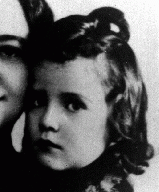
-
Rene Guttmann
ID CardRene, his twin sister, Renate, and their German-Jewish parents lived in Prague. Shortly before the twins were born, Rene's parents had fled Dresden, Germany, to escape the Nazi government's policies against Jews. Before leaving Germany to live in Czechoslovakia, Rene's father, Herbert, had worked in the import-export business. His mother, Ita, was an accountant. 1933-39: Rene's family lived in a six-story apartment building along the #22 trolley line in Prague. A long, steep flight of stairs led up to…

-
Karl Stojka
ID CardKarl was the fourth of six children born to Roman Catholic parents in the village of Wampersdorf in eastern Austria. The Stojkas belonged to a tribe of Roma ("Gypsies") called the Lowara Roma, who made their living as itinerant horse traders. They lived in a traveling family wagon, and spent winters in Austria's capital of Vienna. Karl's ancestors had lived in Austria for more than 200 years. 1933-39: Karl grew up used to freedom, travel and hard work. In March 1938 his family's wagon was parked for the…
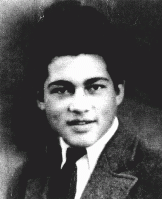
-
Hilda Kusserow
ID CardHilda was born in a territory ruled by Germany until 1919. A teacher and a painter, she married Franz Kusserow and moved to western Germany before World War I. There, she gave birth to 11 children and became a Jehovah's Witness. After 1931 the Kusserow home in the small town of Bad Lippspringe was the headquarters of a Jehovah's Witness congregation. 1933-39: The Nazis repeatedly searched Hilda's home because her family remained openly steadfast in their devotion to Jehovah. Hilda continued doing…

